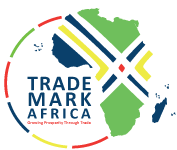It was the launching of the modern Ipatagwa irrigation scheme in 1999 that spurred Jeremiah Mwasanyila to go into rice farming in 2000. He had two acres of land on which he was growing assorted vegetables but decided to devote it all to rice instead. His first harvest later that year yielded 16 bags and he felt he could keep at it.
Later, in 2006, when Mwasanyila and fellow villagers around Ipatagwa, were introduced to the idea of using fertilizer to improve their yields, he collected 24 bags from the same plot. In 2013, with a total of five acres under rice cultivation, Mwasanyila was expecting a yield of 70 bags from that year’s harvest. “But in the end I got only 48 bags,” he says. “The fertilizer brand that I bought turned out to be fake and it caused me a lot of problems.”
However, as the harvest season got underway in June, Mwasanyila and many of his peers soon realized all was not well. Not only was the buyer traffic into Ilongo lighter than usual, but also the few buyers arriving were not offering attractive prices.
“Where are all the buyers, everyone was wondering,” says Mwasanyila. “The few we got were offering as little as Sh60,000 for a 150kg bag and they wouldn’t budge. At such a price it’s as if you worked for nothing, but you are also under pressure to settle your debts now that you have harvested. I opted to try looking for my own market and I went all the way to Chimara, 28km from here. There, I got Sh60,000 per 100kg bag which was much more acceptable to me, even after deducting the cost of Sh3,000 per bag in transportation to Chimara.”
As the farmers would come to learn, the Tanzanian government had in fact taken the decision in January that year to suspend the East African Community’s (CET) external tariff of 75 percent duty on rice imports, making the way for the arrival into the country of 120,000 tons of rice from Asia by June 2013. The decision was in response to concerns over an apparent shortage of the staple on the domestic market which was causing prices to shoot up.
The matter is now also at the heart of a new policy scoping study aimed at collecting and gathering quality data on the rice value chain to assist the government in its decision-making. “The biggest challenge is that data from the private sector is missing which would provide an accurate picture of local demand and supply of rice in Tanzania and whether shortages exist or not,” reports the study titled, ‘Improving Rice Exports to the EAC Region’ which was undertaken by the Tanzania Private Sector Foundation (TPSF) with funding from TradeMark Africa (TMA) the regional trade facilitation organization.
In 2005, EAC member states, including Tanzania, agreed to substantially high Common External Tariffs of 75 percent on rice along with 30 other agricultural products which it categorized as ‘sensitive’ in order to protect regional producers of the commodities from a flood of cheaper imports. But the EAC Common Market Protocol also allows for ‘duty remissions’, which give members leeway to reduce or eliminate tariffs as they deem necessary, and this is the provision that enabled Tanzania to make its decision – with its dire consequences.
In addition, “Tanzanian farmers and traders could no longer sell rice to markets in Uganda, Rwanda and Kenya at zero rate as per the EAC Treaty,” says Edward Furaha, the Director of Policy Analysis and Advocacy at TPSF. “This was rice grown in Morogoro, Mbeya, Rukwa, and other parts of the country yet it could not be sold to the regional markets as traders now had to face a 25 percent duty because governments were justifiably concerned that they could not differentiate between imported rice from Pakistan and that which is grown in Tanzania.”
There is a lot going for Tanzania on the regional rice market; the reason the matter has dominated the public debate since, culminating in the establishment of the Rice Council of Tanzania. The TPSF study notes, “The East African Custom Union and the Common Market provides the greatest opportunity and the strongest incentive for private investment in value chains which can competitively link Tanzanian farmers to consumers in Nairobi, Kampala, and Kigali.”
Recommending that Tanzania would greatly benefit from and must do everything to retain the 75 percent CET, including lobbying members, the report offers more reasons why the country’s rice has a comparative advantage – chiefly, its distinct aroma and the fact that other EAC member states cannot meet their national demand for the staple as they do not have the land resources Tanzania has, which allow for the expansion of production.
“The study gives us a better picture of what we are dealing with and we are now in a position to take it to the government authorities and to regional channels,” says Furaha. “Having information on the table goes a long way in informing strong decisions. As Tanzanians we should ask ourselves, how much do we have in terms of the capability to supply in the region? When you have that information you can enter into agreements that suit you. At this point, we don’t have that kind of information while vital decisions continue to be made.”
The success of several of Tanzania’s economic development strategies rest with its agriculture which currently rides on the aspirations and activities of about 5.5 million small farmers like Mwasanyila who cultivate 11 million hectares of crops and account for an estimated 75 percent of the country’s agricultural production, as well as some 1,000 commercial farmers cultivating over 60,000 ha.
“With a better performing rice sector, you address poverty issues, you create jobs; you have increased government revenues as the rice gets sold and also with the value addition in the sense we are not selling paddy but rice. These are concrete results that we want to see achieved,” says Furaha.
It is the hope of many like Mwasanyila. “In Ipatagwa, we have always sold paddy, the majority of us here,” he says. “We have no rice huller in this center and we therefore cannot sell processed rice. So we are always at the mercy of the buyers who come here and offer us whatever price they wish. Having a huller in rice centers like these would help local farmers because we would get better prices selling rice than selling paddy.”
Source:TradeMark Africa (TMA)
Improving Rice Exports to the EAC Region
Posted on: November 5, 2015
Posted on: November 5, 2015















